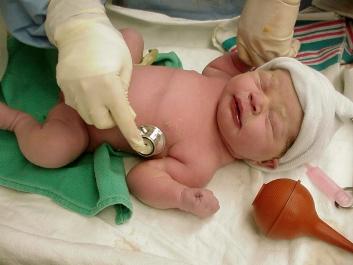At 6 weeks, for many women, pregnancy has only recently been confirmed. Although the fetus might not look like anything that resembles a baby, its body has developed many important organs that clearly mark it as a human. Only a fraction of an inch long, it has a beating heart and brain functions and begins to move.
Size and Appearance
By 6 weeks, an embryo is about 1/4-inch long. In appearance, it doesn’t even look like a baby; it could be described as a lentil or a tadpole that is curled in upon itself.
Body
The head makes up about half of the embryo’s size; this is to allow room for the brain to grow. The face has little spots that mark the eyes and nostrils and depressions for the ears. In the middle of the body, below the heart bulge, is the threadlike umbilical cord. The skeletal system is completely formed. The arms and legs are barely buds, with the thick protrusions for the hands and feet that have webbing between the toes and fingers. The body has a long tail that will be absorbed later by the spinal cord. By midweek, the baby begins moving around inside the amniotic sac.
Cardiac
During this week, the bulge that will become the heart is beginning to divide into four chambers. By midweek, the tiny heart begins to flutter at a rate between 100 and 160 beats per minute; that’s twice as fast as the mother’s heartbeat. According to Parents.com, the human heart is the baby’s first working organ.
Other Internal Systems
Internally, the embryo is developing the liver, appendix, pancreas and intestines. A tiny bud of tissue that will become the lungs is formed as the tongue and vocal cords are forming. Small bony blocks along the back will become the spine and ribs, and the central nervous system and the circulatory system are developing. A neural tube connecting the brain to the spinal cord begins to form. The hemispheres in the brain have formed and brain waves are recorded.
Gender
Below the midsection, a tiny cluster of cells begins to form the reproductive organs. Baby boys form a penis at this time and babies of both genders begin to form mammary glands and a pituitary gland.





